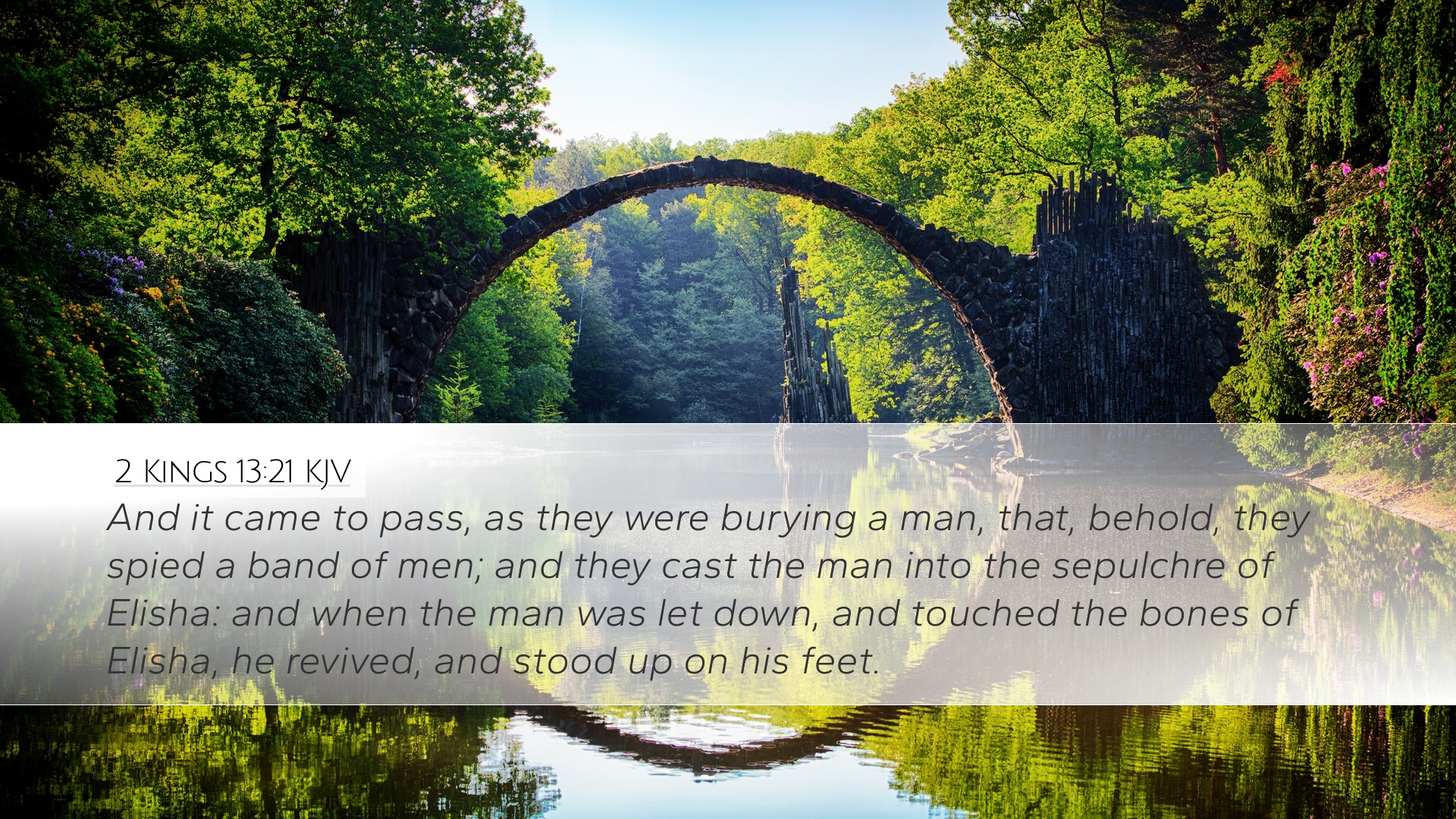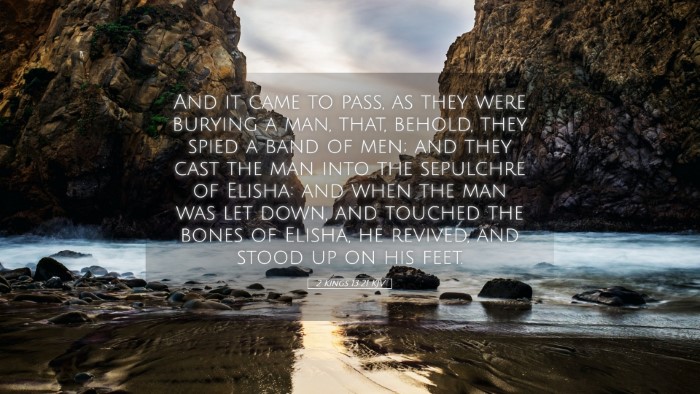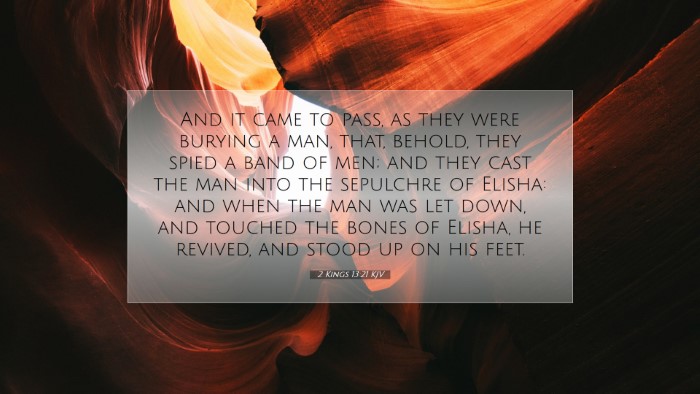Commentary on 2 Kings 13:21
Bible Verse: "And it came to pass, as they were burying a man, that, behold, they spied a band of men; and they cast the man into the sepulchre of Elisha: and when the man was let down, and touched the bones of Elisha, he revived, and stood up on his feet."
Introduction
This remarkable account in 2 Kings 13:21 serves as a powerful testament to the divine authority resting on the prophet Elisha even after his death. As we delve into the insights provided by renowned biblical scholars such as Matthew Henry, Albert Barnes, and Adam Clarke, we find profound theological implications and practical applications for modern readers, especially for pastors, students, and theologians.
Contextual Background
The historical context of this verse is essential for understanding its significance. Elisha, the prophet who succeeded Elijah, had performed numerous miracles during his lifetime, establishing God's power through his ministry to Israel. His life, marked by service, fidelity, and miraculous works, came to a close, yet his legacy endured. This event occurs during a time of national upheaval, suggesting a deep need for God's intervention and the sustaining faithfulness of His servants.
The Miraculous Intercession
Matthew Henry remarks upon the profound nature of the resurrection within this passage, indicating that it demonstrates God’s ongoing power to restore life, even through the relics of His faithful servants. Elisha's bones, still emanating divine authority, can be viewed as a testament to God's promise of resurrection and restoration. The act of casting the dead man into the sepulchre signifies a desperate search for hope amidst despair, highlighting the chaotic state of Israel during this time.
The Significance of Touch
Albert Barnes emphasizes the act of the man touching Elisha's bones as critical. It signifies the transference of prophetic power and grace. In ancient Israel, touching the sacred often held transformative power, symbolizing the restoration of life and holiness. The connection between the dead man and Elisha’s relics signifies a bridge between destruction and resurrection. This touch is a revelation of faith, illustrating that even in death, God’s divine action is effectively present.
Theological Implications
This verse underscores significant theological themes pertinent for scholars and clergy alike:
- Continuity of Divine Power: The miracle demonstrates that God's power does not cease with the death of His servants. As Adam Clarke discusses, the resurrection signifies that God's purposes extend beyond physical life; faithful servants continue to be instruments of His will, even after death.
- Resurrection Hope: The incident prefigures the ultimate resurrection found in Christ. The revival of the dead man evokes the central Christian eschatological promise, which assures believers of eternal life through Jesus Christ, as referenced in the New Testament.
- Faith Amidst Despair: The circumstances surrounding the burial illustrate the hopelessness faced by the Israelites. In moments of desperation, the actions of the people in seeking Elisha's tomb ultimately lead to divine intervention, emphasizing the necessity of faith even during dark times.
Practical Applications
Understanding the layers of meaning within 2 Kings 13:21 provides modern readers—including pastoral leaders, theologians, and students—with vital applications:
- Embracing Belief in God’s Power: The narrative invites believers to cultivate an unwavering faith in God's ability to resurrect hope and life in challenging circumstances.
- Learning from Legacy: The account shows the lasting impact of a faithful life. Elisha’s dedication serves as a model for today’s leaders to invest in the community of believers, recognizing that their legacy can empower future generations.
- Engaging in Community Needs: Just as the mourners were preoccupied with their grief and chaos, today's church must remain sensitive to the needs of its community, offering support and guidance through faith-driven action.
Concluding Reflections
In conclusion, 2 Kings 13:21 is a profound episode that encapsulates the themes of hope, continuity of God's power, and the transformative effects of faith. The insights from public domain commentaries enrich our understanding and call us to reflect on our faith in God's promises. This narrative invites believers to find comfort in the hope of resurrection and the enduring legacy of faithful servants of God. As we engage with this scripture, may we be encouraged to witness the miraculous works of God in our own lives and communities.


